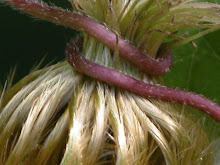A Good and Sweet Year
In a Universalist Fellowship church nestled under towering Doug firs near Garden Home, a community of humanistic Jews celebrated Rosh Hashanah last night. The weather was transitioning from summer to fall with rain drizzle, and mildew smells abounded at the entrance. As she entered the building, a woman from dry Calgary Alberta Canada said, "What's that smell?"
On the stage inside the auditorium a small ensemble softly played melancholy music on guitar and keyboard. A chorus of ten faced the audience, where conversations salted with oi's and peppered with grey hairs drifted in the air with the mildew spores.
The Bema Reader (Bema means raised platform) tries the microphone, which isn't working it seems. Several people work to repair it, and after about ten minutes, the Bema Reader says through the now-working mic: "How many humanistic Jews does it take to get a microphone working?"
All sing “lie-lie-lie-lie-lie-lie-lie-lie-lie-lie” as the evening's celebration begins in earnest. The Bema Reader reads, the 100 or so people of the audience follow along in the program, singing along with the chorus.
This is the beginning of a new year and a time to come together with "warmth within our hearts, wisdom in our minds, and passion in our souls." Candles are lit. It’s a time to reflect deeply at one's reality and life for the next ten days during this time between tonight's Rosh Hashanah and Yom Kippur. The reward for proper atonement is the prospect of a good year to come, which is expressed in the greeting "May you be inscribed for a good year."
Then comes the much anticipated blowing of the Shofar, a ram's horn, by an esteemed man whose fingers and hands shook a lot, signaling the start of the holiday observances and, for our little gathering, a proclamation of the faith in the humanistic values needed to create a happy and secure society. Then, for the Remembrance of Our Dead and with mounting tears, people here and there in the audience shout out names of loved ones. I wanted to shout out: "Chuck-a-Luck and SweetPea" but thought it would sound disrespectful. (Two clowns I miss every day.)
At the end, just like the traditional New Year’s Eve tradition, people kiss and hug. Apples are dipped in honey and wishes are extended for: "A good and sweet year!" It was an uplifting and inspiring get-together.
This video was made inside the Portuguese Synagogue in Amsterdam.
Labels: amsterdam, humanistic Jews, Portuguese Synagogue, Rosh Hashanah











